class: center, top, title-slide .title[ # <strong>Limits on Population Growth</strong> ] .subtitle[ ## .white[EFB 390: Wildlife Ecology and Management] ] .author[ ### <strong>Dr. Elie Gurarie</strong> ] .date[ ### October 28, 2025 ] --- <!-- https://bookdown.org/yihui/rmarkdown/xaringan-format.html --> .pull-left-70[ --- ## As populations grow ... ### they always hit **Limits to growth** .content-box-blue.large[ - Space limits - Resource limitations - Competition - Predation - Disease *All of these can interact * ] ] .pull-right-30[ 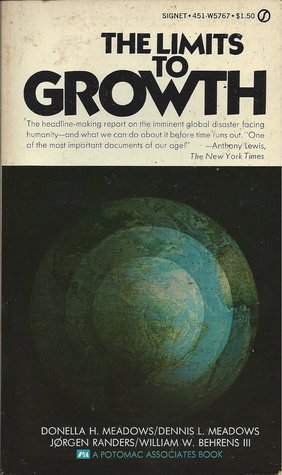 ] --- ## Fundamental population equation `$$\huge \Delta N = B - D + I - E$$` .large[ Exponential growth assumes these (especially .red[**Birth**] & .red[**Death**]) are proportional to .red[**N**]. (in other words, *per capita* death *d* and birth *b* rates are constant) But at high N ... B can fall, or D can rise, or I can decrease or E can increase. ] ### Density dependence .large[ Means that the *rate* of a parameter(e.g. `\(b = {B\over N}\)` or `\(d = {D\over N}\)` is: - (a) NOT constant - (b) dependent on total population (or density) `\(N\)`. ] --- ## Key demographic rates: **Fecundity** & **Survival** .pull-left[ ### Fecundity **Number of offspring produced per individual** (usually per female) .content-box-blue[ **Notation:** - `\(b\)` = fecundity rate - `\(B = b \times N\)` (total births) - Often measured as: - offspring per female per year - litter size × litters per year ] **Examples:** - White-tailed deer: ~1.5 fawns/female/year - Wolves: ~4 pups/female/year (in a pack) - Mice: 5-10 pups/litter, multiple litters/year ] .pull-right[ ### Survival | Mortality **Probability an individuals survives | dies** .content-box-blue[ **Notation:** - `\(s\)` = survival rate (proportion surviving) - `\(d = 1-s\)` death rate - `\(D = d \times N\)` (total deaths) ] **Examples:** - Adult deer: `\(s \approx 0.85\)` (85% survive/year) - equivalently: `\(d \approx 0.15\)` (15% die/year) - Juvenile survival often much lower - Can vary by age, sex, season ] --- .pull-left-50[ ## Example: Wolf populations - Dispersal into new area, mainly wolf mating pairs. - Highly territorial! - Wolves produce up to 4 pups per litter that survive - If there are no neighbors, wolves will disperse to found new packs - Pack with 8 adults or 2 adults, still produces (about) 4 pups per litter - If there are lots of neighbors, packs become larger (more individuals) in smaller territories. <img src='images/WI_WolfTerritorySize.png' width='80%'/> ] .pull-right-50[ **Expansion of Wisconsin Wolves, 1970's to 2000's** 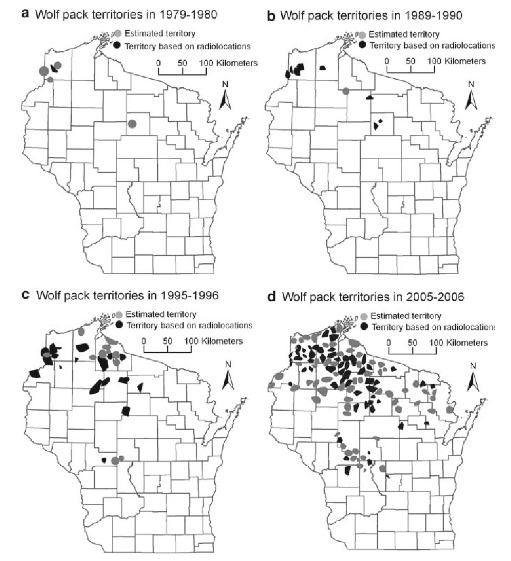 ] --- ## Human-wolf experiment model .pull-left-60[ ### basics of model - 8 possible territories - 1 initial dispersing wolf (female) ### each season ... - One female / pack gives birth to 2 offspring - Offspring can choose whether to disperse or not - 1/4 of all wolves die each year ] .pull-right-40[ 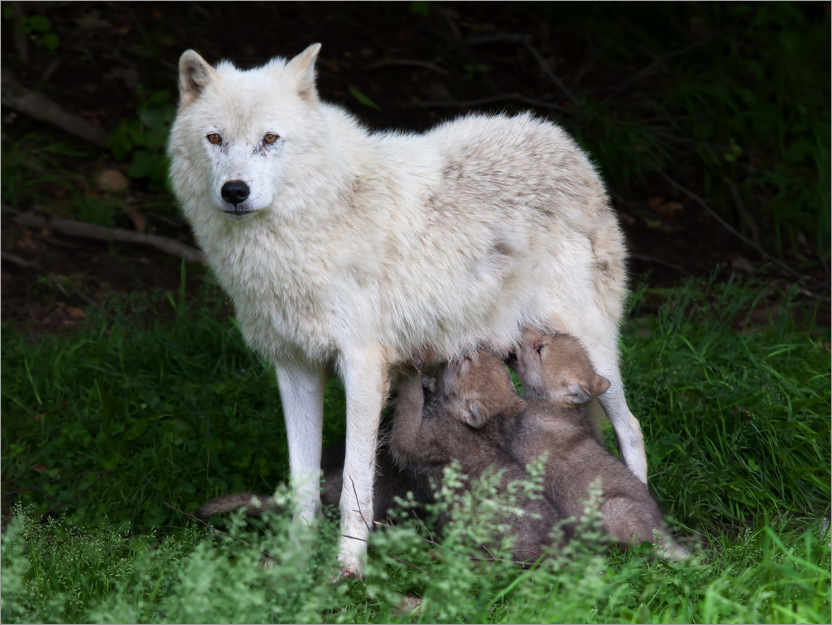 ] Enter data [here](https://docs.google.com/spreadsheets/d/15j2b3FCfbtrPkAlRb6QE6s55aRqggeSDi5YU6OBh7Yc/edit?usp=sharing) --- class: inverse ## Results of Human Wolf Experiment .center[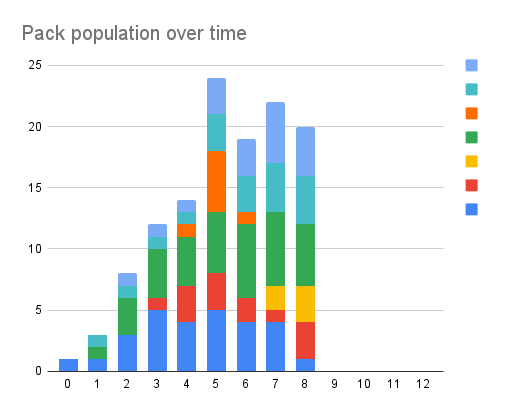 Looks a lot like initial exponential growth stabilizes around 20 ind as die-offs balance out births. ] --- .pull-left[ # Modeling wolf population Population equation: `$$N_t = (1 + b - d) \times N_{t-1}$$` Death rate is constant: `\(d = 0.25\)` Birth rate is high when population is low: `\(b_0 = 2\)` Birth rate is small when population is high: - `\(N = 1\)`; `\(B = 2\)`; `\(b = 2\)` - `\(N = 8\)`; `\(B = 16\)`; `\(b = 2\)` But it hits an absolute maximum of 16 total. So if: - `\(N = 32\)`; `\(B = 16\)`; `\(b = 1/2\)` - `\(N = 64\)`; `\(B = 16\)`; `\(b = 1/4\)` ] .pull-right-40[ 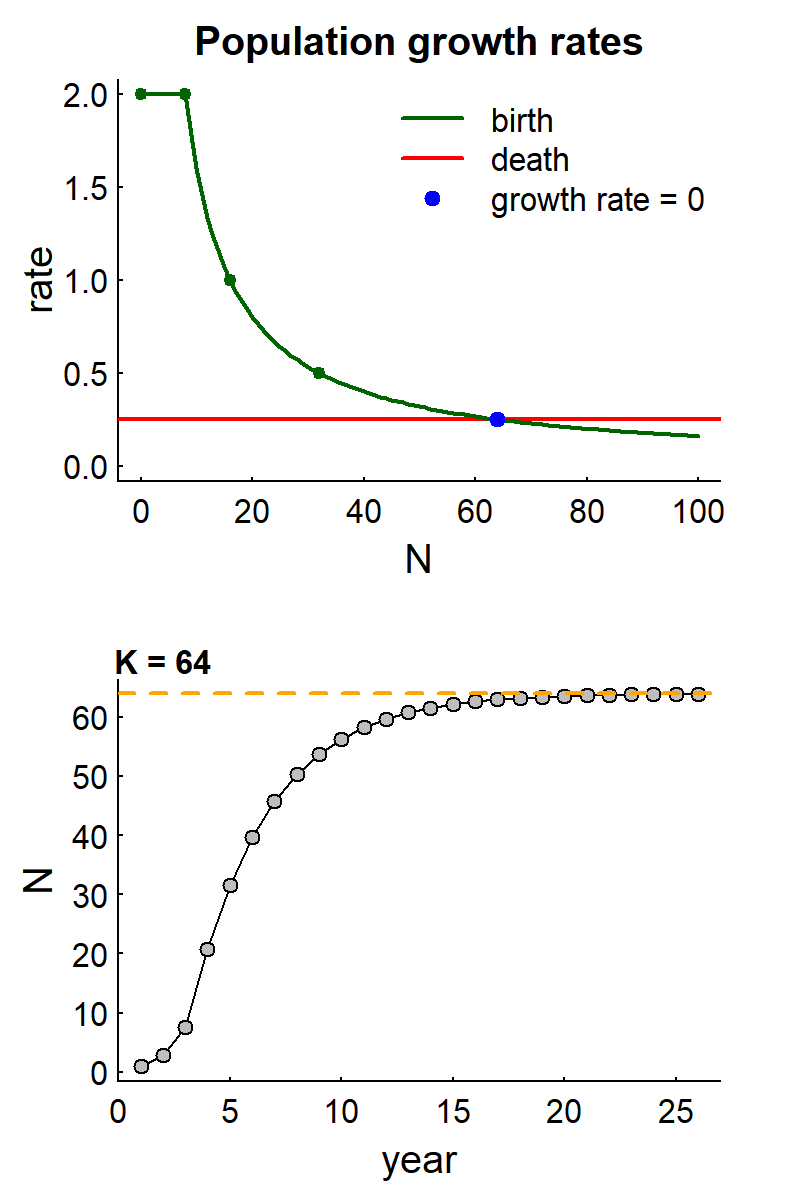<!-- --> ] --- .pull-left-60[ ## Some Concepts - Natural populations are always eventually limited - The "cap" on a population is called the .darkred[***Carrying Capacity*** ] (symbol: **K**). This is - When population rates (*b*, *d*, also *i*, *e*) depend on the **total population**, this is called: .darkred[***Density Dependence***]. - The maximum growth rate (max `\(b-d\)`) is called the .darkred[**intrinsic growth rate**]. ] .pull-right-40[ 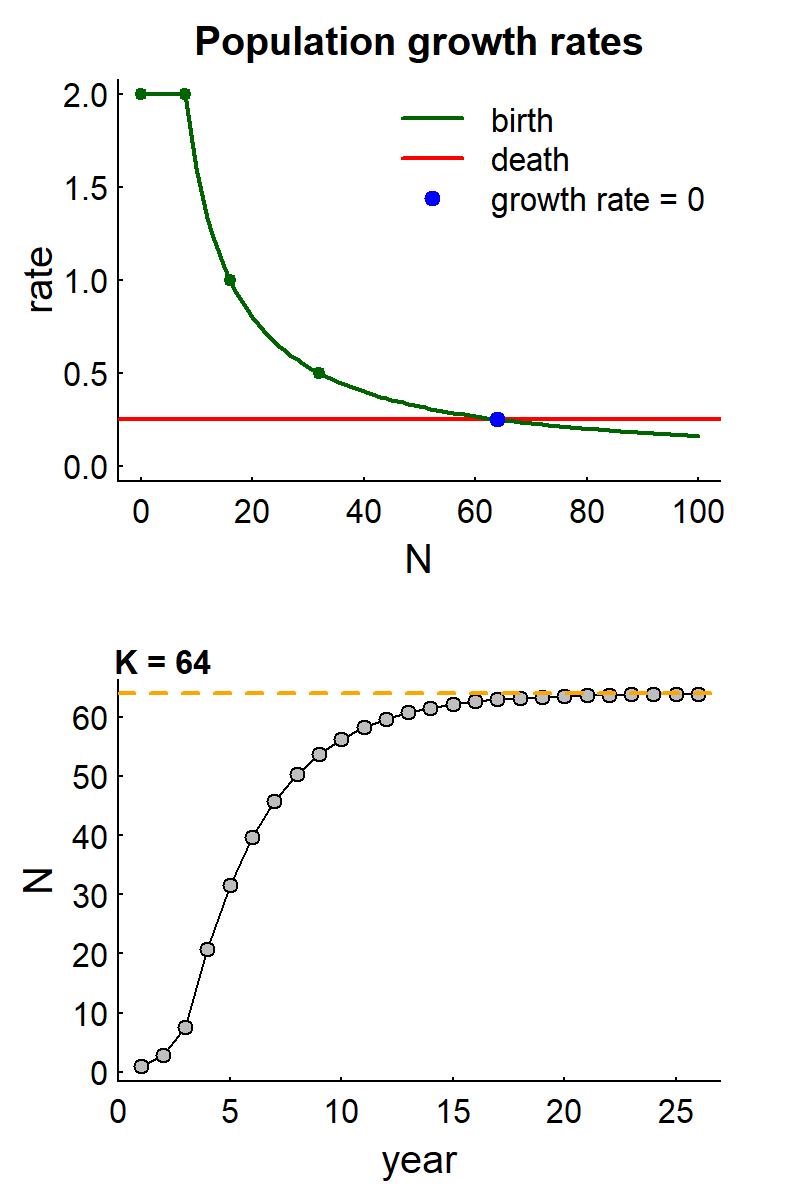<!-- --> ] --- .pull-left[ # Logistic growth .darkred[***Logistic growth***] is a specific kind of .darkred[Density Dependent] growth where the relationship between ***r*** and ***N*** is .darkred[**linear**]. The formula is: `$$r = r_0 (1 - N/K)$$` <img src="Lecture_PopulationEcology_PartII_files/figure-html/unnamed-chunk-3-1.png" width="100%" /> ] .pull-right[ 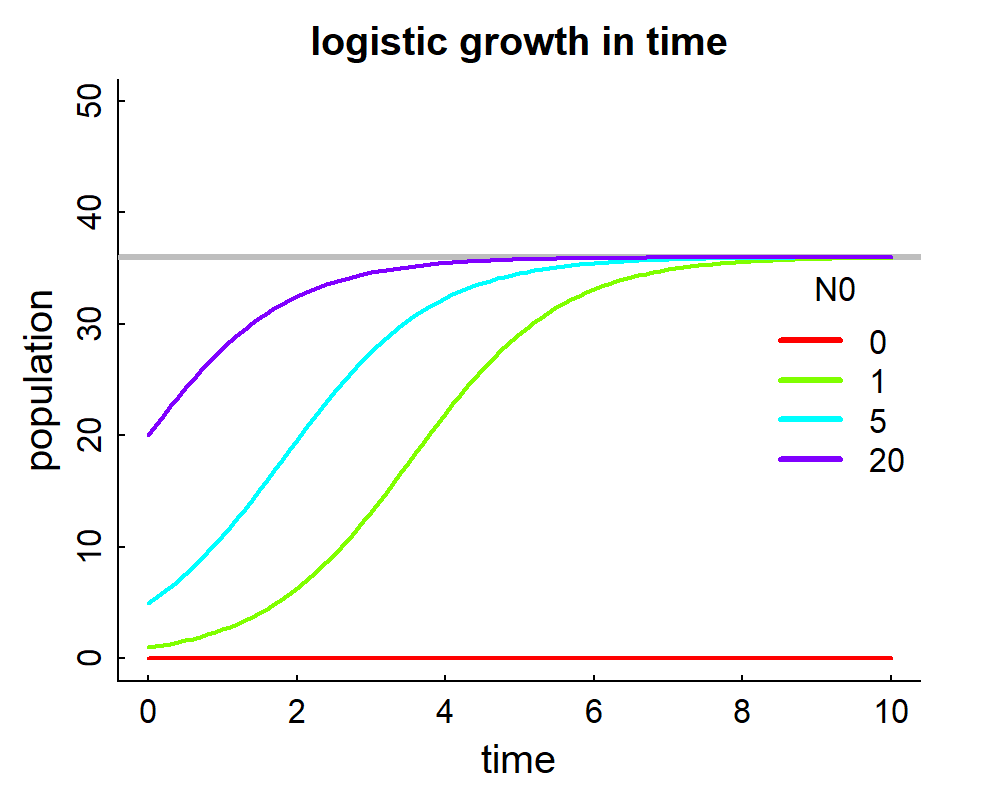<!-- --> - At `\(N=0\)` - growth = 0 - At `\(N\)` slightly above 0 - growth maximum `\(\approx r_0\)` - At `\(N = K\)` - growth = `\(0\)` - At `\(N > K\)` - growth < `\(0\)` ] --- ## Exponential vs. Logistic Growth in Three Graphs .pull-left[ ***Exponential*** | ***Growth*** ---:|:--- equation: | `\({dN \over dt} = r N\)` solution: | `\(N(t) = N_0e^{rt}\)` ] .pull-right[ ***Logistic*** | ***Growth*** ---:|:--- equation: | `\({dN \over dt} = r_0 N\left(1-{N\over K}\right)\)` solution: | `\(N(t) = {K \over 1 + \left({K-N_0 \over N_0}\right)e^{-r_0 t}}\)` ] <br> 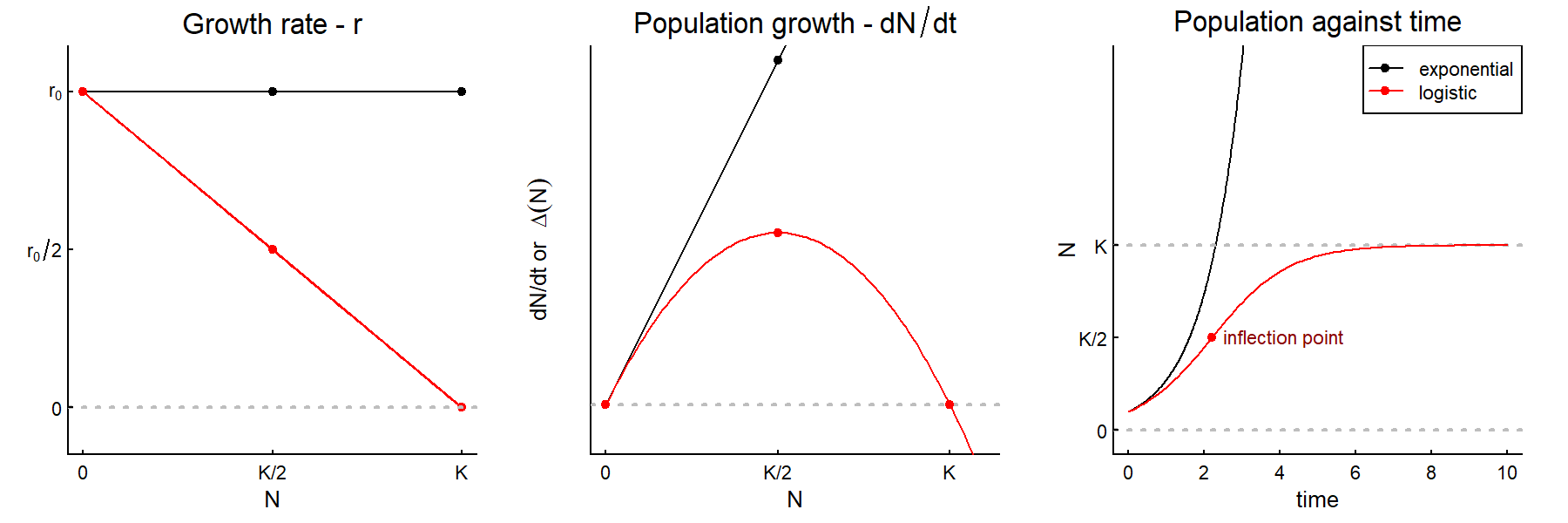 --- ## Intrinsic growth rate: `\(r_0\)` .pull-left-40[ ***In the best of all possible worlds*** .large[ `$$\large r_0 = 1.5 \, W^{-0.36}$$` ] `\(W\)` is live weight in kilograms <table class="table table-striped" style="font-size: 16px; color: black; margin-left: auto; margin-right: auto;"> <thead> <tr> <th style="text-align:left;"> Species </th> <th style="text-align:right;"> Weight (kg) </th> <th style="text-align:right;"> r₀ </th> <th style="text-align:right;"> Doubling time (years) </th> </tr> </thead> <tbody> <tr> <td style="text-align:left;"> Mouse </td> <td style="text-align:right;"> 0.02 </td> <td style="text-align:right;"> 6.13 </td> <td style="text-align:right;"> 0.1 </td> </tr> <tr> <td style="text-align:left;"> White-tailed Deer </td> <td style="text-align:right;"> 60 </td> <td style="text-align:right;"> 0.34 </td> <td style="text-align:right;"> 2.0 </td> </tr> <tr> <td style="text-align:left;"> Elephant </td> <td style="text-align:right;"> 4000 </td> <td style="text-align:right;"> 0.08 </td> <td style="text-align:right;"> 8.7 </td> </tr> </tbody> </table> **Q. Why would this be the case?** .large[Smaller animals: shorter generation times, larger litters, faster maturation] ] .pull-right-60[ 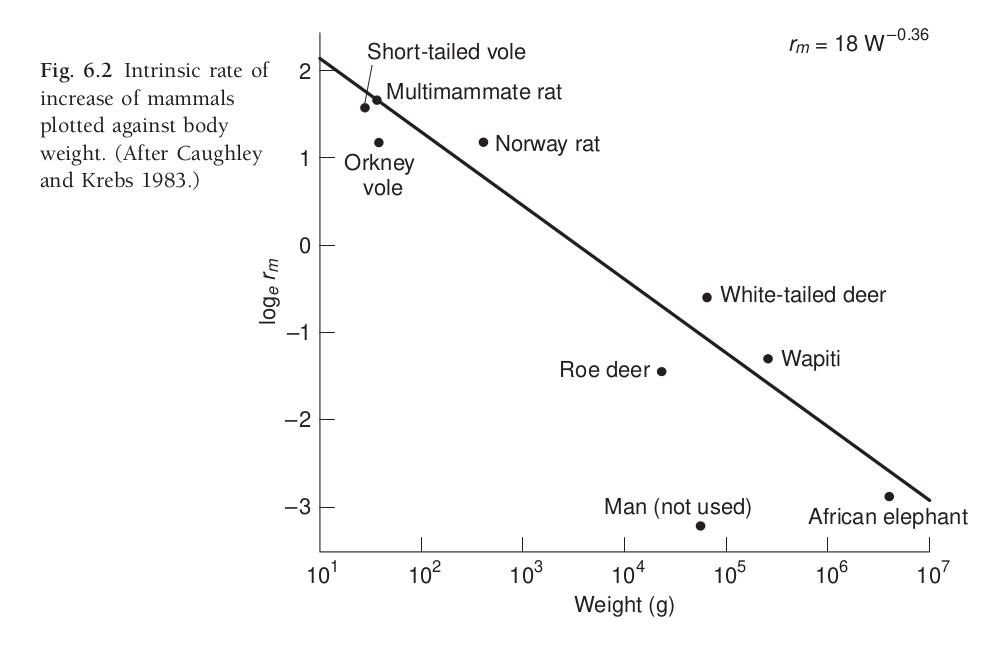 .small.center[[Caughley and Krebs (1983)](https://www.zoology.ubc.ca/~krebs/papers/58.pdf) ] ] --- ## Different models of density dependence .pull-left-30[ **What is it that depends on density?** Is it birth? Is it death? Is it linear? Is it curvy? ] .pull-right-70[ 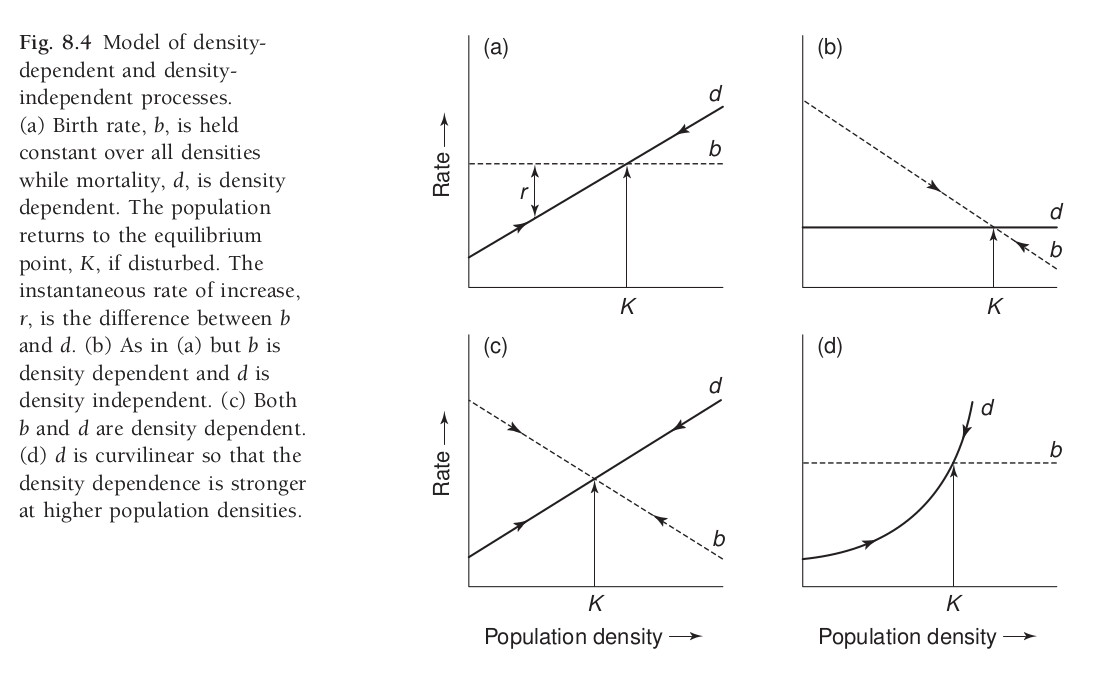 .center[Fryxell chapter 8.] ] --- # Density dependent mortality & fecundity .pull-left-30[ ## Convex curves - **Mortality** can be high when densities are highest. - **Fecundity** (# of offspring per female) falls at high densities. - For long-lived animals, this effect mainly kicks in at high numbers (*not linear*). ] .pull-right-70[ 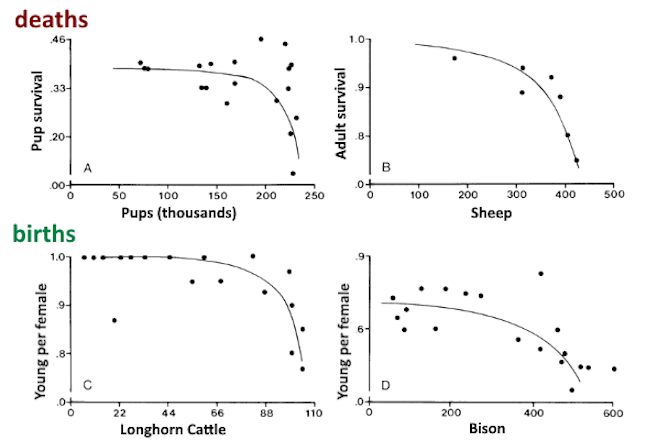 .center[Fowler (1981)] ] --- .pull.left[ ## **Concave curves:** Butterflies ] .pull-right[When **density dependent effects** kick in when populations are **small** rather than **large**.] 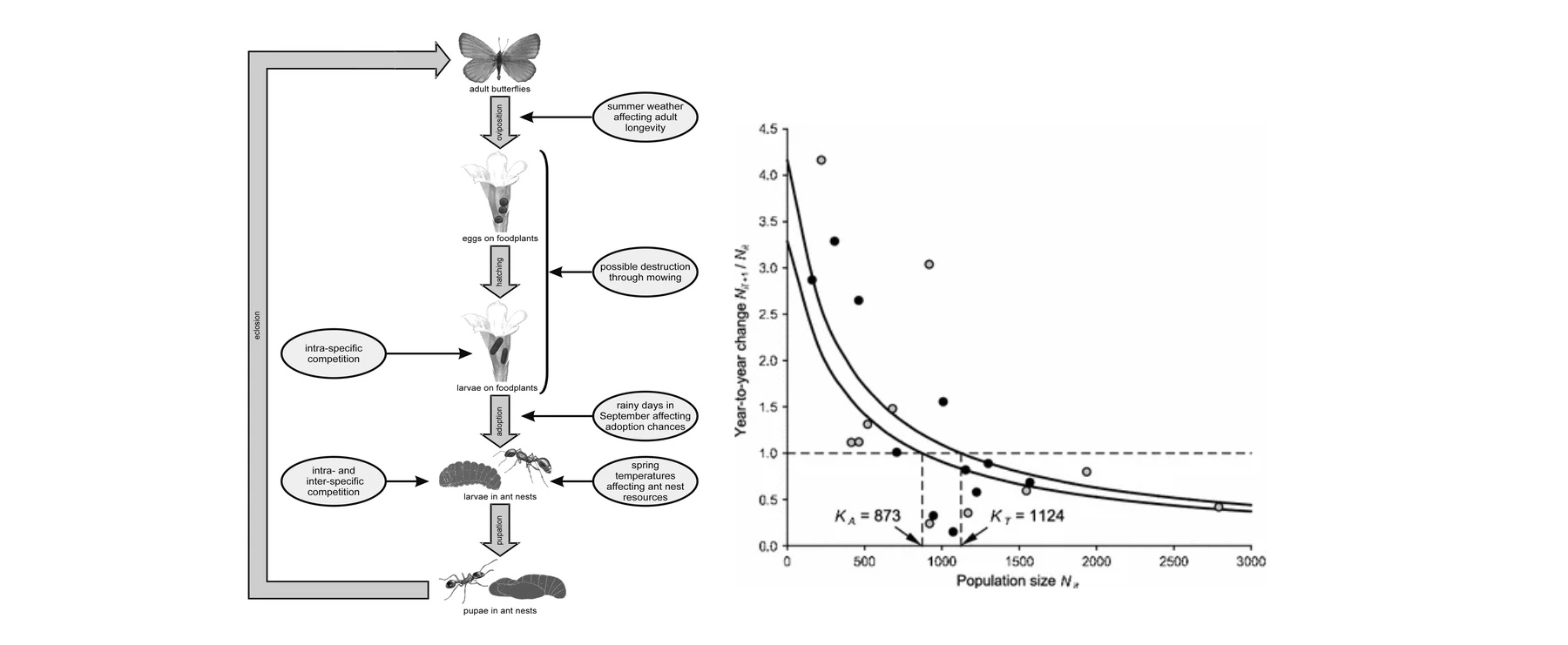 .center[(Nowicki et al. 2009)] --- ## Carrying capacity .pull-left.large[ **Ecological carrying capacity** Basically - *K* of a logistic growth Limited (almost always) by: - resources: - food - shelter - breeding **habitat** - space - interactions (predation / parasites / disease) ] .pull-right[ > For the **Howework assignment** you will explore different ways in which **Ecological Carrying Capacity** is estimated, and why it is an important question for wildlife ecologists to ask. ] --- .pull-left-60[ #### ***Kinds of "Carrying Capacity"*** ### Ecological carrying capacity **The natural limit** - **K** in logistic equation - Set by **resources** in the environment - Population equilibrium from density-dependence - lack of food, space, cover | predators | disease | etc. - Can change as environment changes ### Economic carrying capacity **Maximum sustained yield** - for harvest/cropping - Population level for maximum offtake - Used by range managers, animal production - **Well below** ecological K - For logistic growth: **K/2** or 50% of ecological K ] .pull-right-40[ 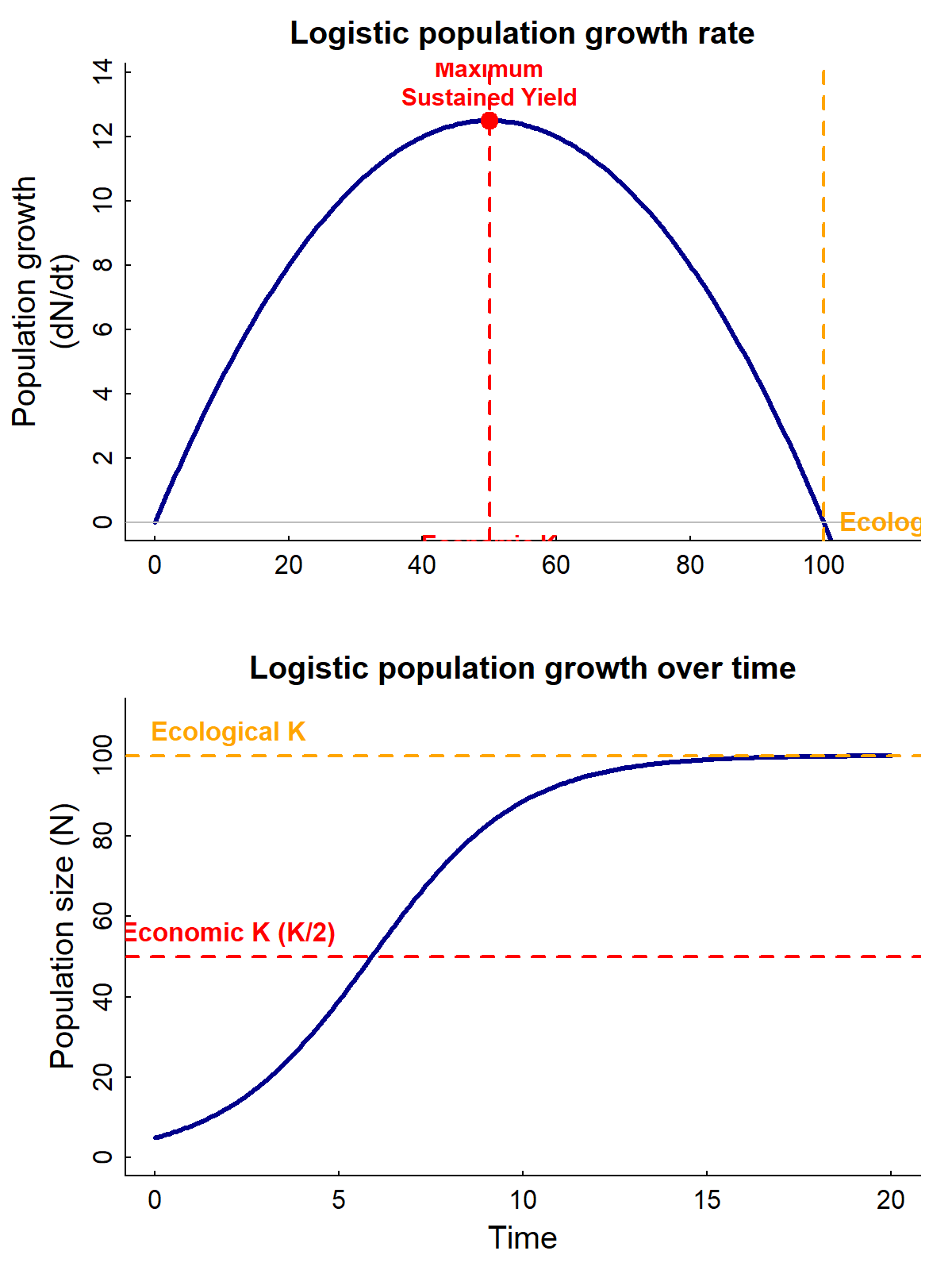<!-- --> ] --- #### ***Kinds of "Carrying Capacity"*** .pull-left[ ### Social / Cultural carrying capacity **Human tolerance level** - varies by context **Examples:** Wolves on Wyoming ranch: **K = 0** - *(no tolerance for livestock predation)* Elephants near tourist hotels in Serengeti: - **K < ecological K** to preserve scenic Acacia trees for tourism Urban deer in residential areas: - **highly variable** *(depends on garden/road collision damage tolerance)* ] .pull-right[ 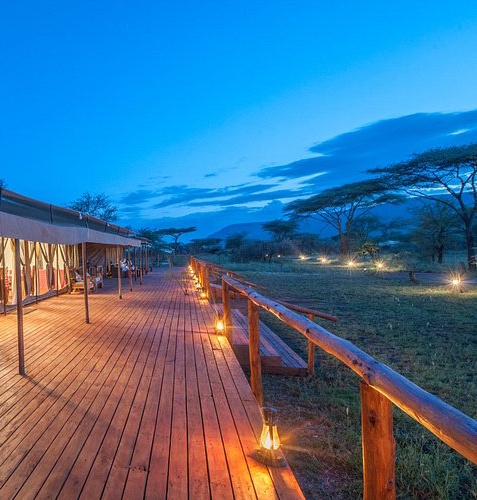 .center[(Fryxell Chapter 8)] ] --- ## Some references .small[ - Benton T G, A Grant, and T H Clutton-Brock. 1995. Does environmental stochasticity matter? Analysis of red deer life-histories on Rum. Evolutionary Ecology 9:559–574. [link](https://doi.org/10.1007/BF01237655) - Caughley G and C J Krebs. 1983. Are Big Mammals Simply Little Mammals Writ Large? Oecologia 59:7-17. [link](https://doi.org/10.1007/BF00388065) - Chapman E J and C J Byron. 2018. The flexible application of carrying capacity in ecology. Global Ecology and Conservation 13:e00365. [link](https://doi.org/10.1016/j.gecco.2017.e00365) - Fowler C W. 1981. Density Dependence as Related to Life History Strategy. Ecology 62:602–610. [link](https://doi.org/10.2307/1937727) - Laidre K L, R J Jameson, S J Jeffries, R C Hobbs, C E Bowlby, and G R VanBlaricom. 2002. Estimates of carrying capacity for sea otters in Washington state. Wildlife Society Bulletin 30:1172–1181. [link](https://www.jstor.org/stable/3784286) - McClelland C J R, C K Denny, T A Larsen, G B Stenhouse, and S E Nielsen. 2021. Landscape estimates of carrying capacity for grizzly bears using nutritional energy supply for management and conservation planning. Journal for Nature Conservation 62:126018. [link](https://doi.org/10.1016/j.jnc.2021.126018) - Nowicki P, S Bonelli, F Barbero, and E Balletto. 2009. Relative importance of density-dependent regulation and environmental stochasticity for butterfly population dynamics. Oecologia 161:227–239. [link](https://doi.org/10.1007/s00442-009-1373-2) - Potvin F and J Huot. 1983. Estimating Carrying Capacity of a White-Tailed Deer Wintering Area in Quebec. The Journal of Wildlife Management 47:463-475. [link](https://www.jstor.org/stable/3808519) - Sibly R M, D Barker, M C Denham, J Hone, and M Pagel. 2005. On the Regulation of Populations of Mammals, Birds, Fish, and Insects. Science 309:607–610. [link](https://doi.org/10.1126/science.1110760) - Thébault J, T S Schraga, J E Cloern, and E G Dunlavey. 2008. Primary production and carrying capacity of former salt ponds after reconnection to San Francisco Bay. Wetlands 28:841–851. [link](https://link.springer.com/article/10.1672/07-190.1) - Wydeven A P, T R Van Deelen, and E J Heske, editors. 2009. Recovery of Gray Wolves in the Great Lakes Region of the United States: An Endangered Species Success Story. Springer New York, New York, NY. [link](https://doi.org/10.1007/978-0-387-85952-1) ]